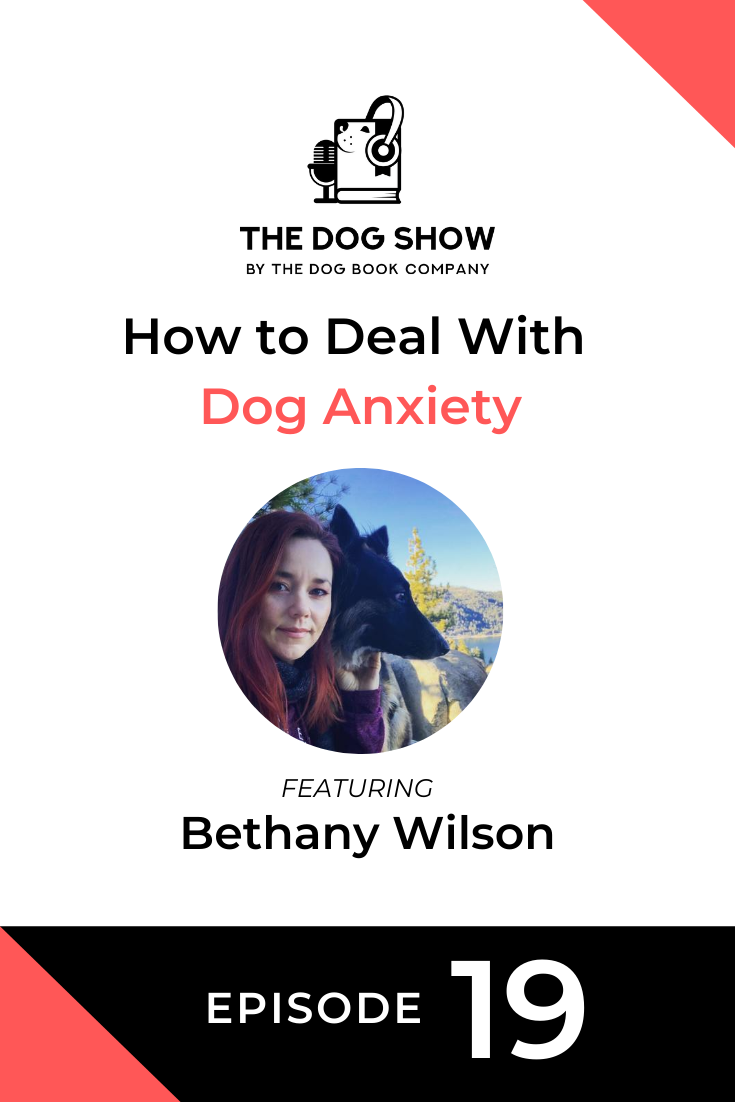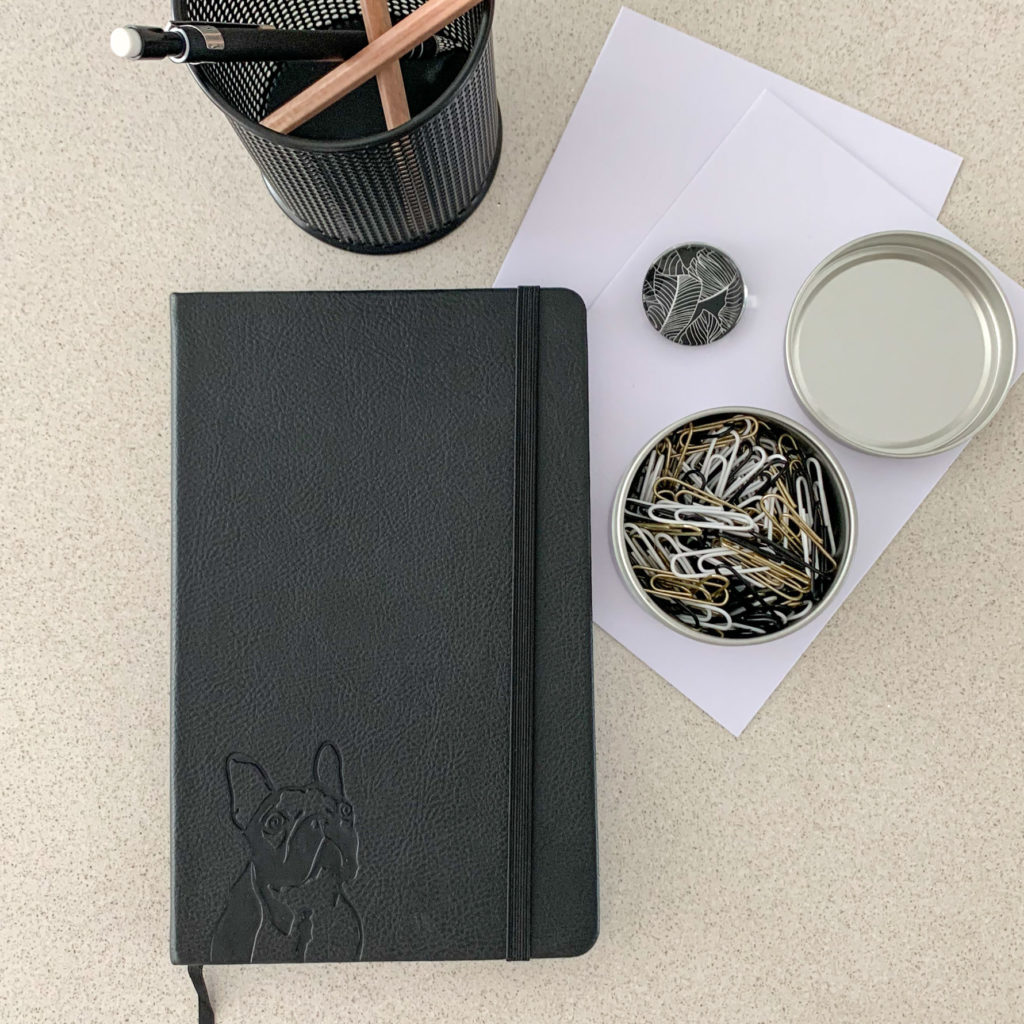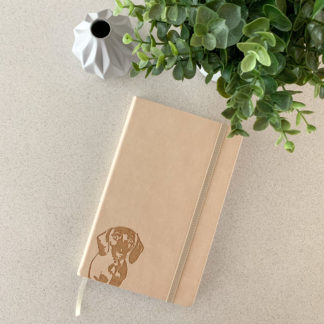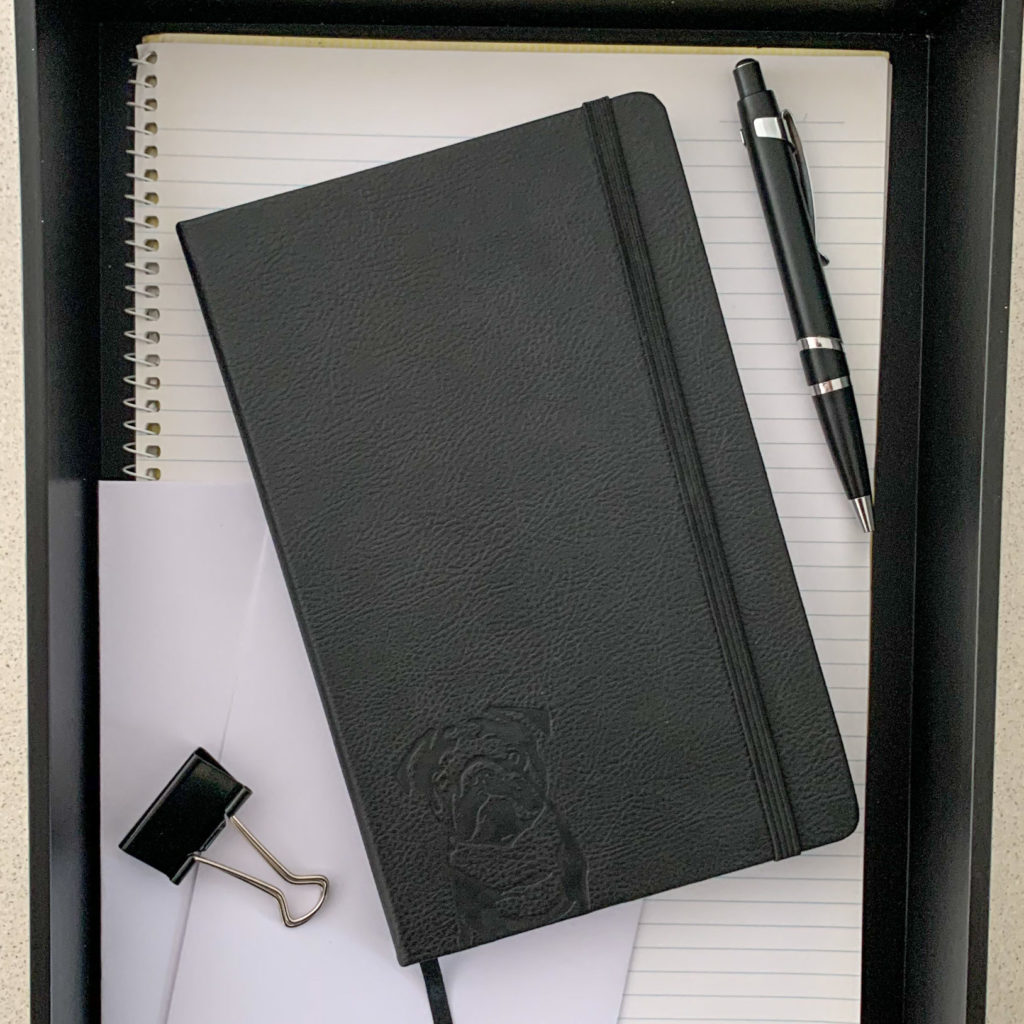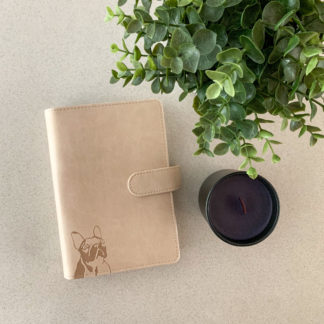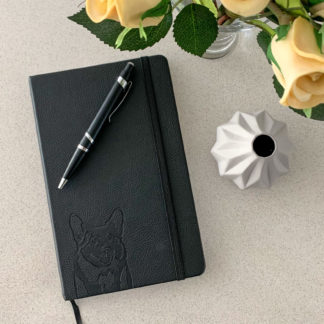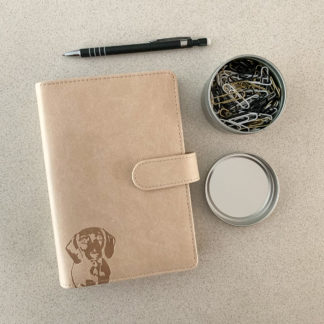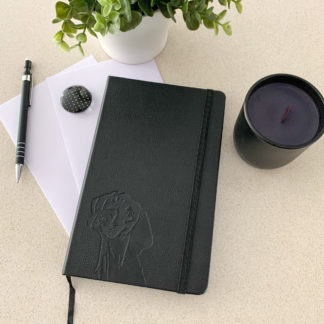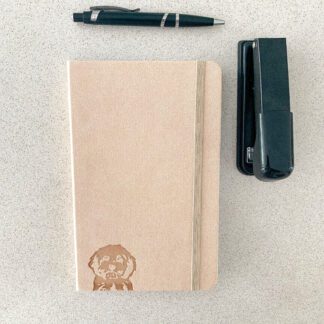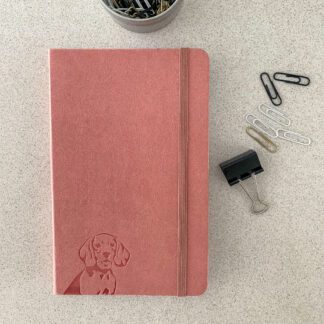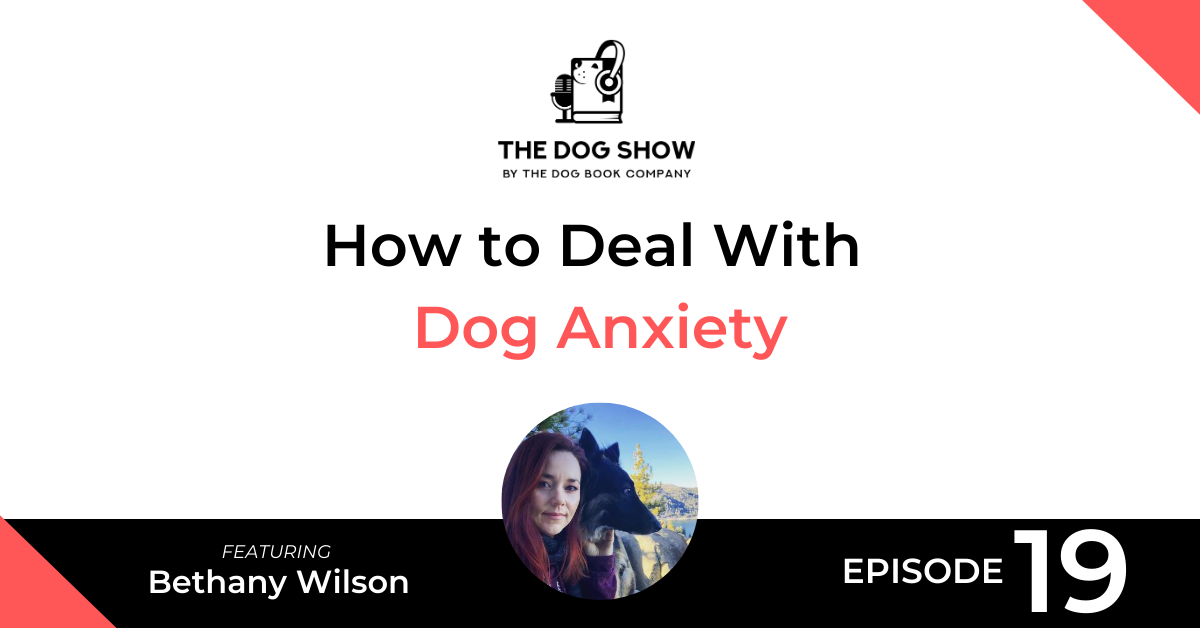
Dealing with dog anxiety? Want to know how to fix it?
This episode of The Dog Show features Bethany Wilson. Bethany is the Founder and head trainer of Ruff Beginnings Rehab, a full-service dog training facility based in Los Angeles, California. Ruff Beginnings provides owners with guidance, homework, schedules, and aftercare, as well as an expansive range of online training videos.
In the interview, we explore the reasons behind dog anxiety and discuss practical advice for owners looking to overcome it.
Find out more about Ruff Beginnings Rehab here:
Listen
Watch
Read
Will: This episode of “The Dog Show” features Bethany Wilson. Bethany is the founder and head trainer of Ruff Beginnings Rehab, a full-service dog training facility based in Los Angeles, California. Ruff Beginnings provides owners with guidance, homework, schedules, and aftercare, as well as an expansive range of online training videos. In the interview, we explore the reasons behind dog anxiety and discuss practical advice for owners looking to overcome it. Bethany, welcome to “The Dog Show” today. Thanks for coming on.
Bethany: My pleasure.
Will: Yeah. It’s absolutely great to have you. You’re in California or you said just outside of California where you run your rehab and training business.
Bethany: Right outside of LA.
Will: Okay. Yeah. Perfect. Perfect. So, in California, just outside of LA.
Bethany: Yeah. Yeah.
Will: I actually love California. I lived over there for 12 months when I was a bit younger and just loved the climate over there. There’s some similarities to Australia.
Bethany: Yeah, I think so too. I grew up in Illinois, which is really humid, and so when people complain about the bugs out here in California, I laugh at them because they have no idea what real bugs actually are. So, yeah, I’ll definitely take the climate out here.
Will: Yeah. I mean, obviously, it can get pretty humid and hot in the summer though, in LA., right?
Bethany: Not compared to other parts of the United States. Not really. No. Not really.
Will: I guess you got the coast nearby, so that helps.
Bethany: Yeah. Yeah. It’s really dry where I’m at because it’s Southern California, so it’s really dry, and yeah, I’m a little bit closer to the coast. Yeah.
Will: So, I’d like to hear more about your three dogs, Dakota, Dusty, and Happy. Can you tell me more about them?
Bethany: Yeah. I actually have four now. I did the whole make sure you adopt a dog over COVID quarantine, that bandwagon, so I have four now. It’s an elderly Taiwanese Formosan mountain dog that was rescued from Taiwan when he was a pup. And then he became aggressive, and then I worked with him through rescue as he’s nine now, so he’s much older and then ended up keeping him. We were like, “Why not? Whatever.” So, yeah, I have four.
Will: Well, it’s actually nice I think. I mean, at least you have the skills and experience to take a dog on during COVID and everything. I think there’s probably a lot of people out there that might have got a new puppy or something, which they didn’t really know what they were getting themselves into, so…
Bethany: Yeah, I’m getting tons of puppy questions. It’s been, like, times three, you know, from anything I’ve ever had before because people are stuck at home with their puppies. Yeah, for sure.
Will: Can you tell me more about the breeds that you’ve got yourself, and maybe if there’s any breeds that you like more than others or…?
Bethany: Yeah, I’ve got a little Maltese mix. She actually turned 14 today. She’s the reason that I got into more behavioral stuff because she’s a mess. She had separation anxiety as a puppy really bad, hated dogs, hated people really bad. And I did lots of things wrong, even though I knew, you know, some at the time because I grew up with animals, but not in the city, you know, and it’s just different. It’s very, very different from farm country life to having a small dog in city life. And so, she’s basically my Guinea pig of all the different types of training that I’ve done. And then I have a Border Collie, a German Shepherd, and then I’ve got the mountain dog.
Will: Okay. So, you don’t have like a… You spoke more about kind of which breed was interesting for your training and everything like that, but you don’t have an affinity to any of the breeds in particular or…?
Bethany: I do. I do, herding dogs. I love herding dogs, any herding dog, but specifically, yeah, Australian Shepherds, Border Collies, German Shepherds. Yeah. I love herding dogs.
Will: I read on your bio. So, you used to work with Aussie Shepherds when you were younger as well.
Bethany: Yeah, my family bred them, so I grew up with several litters of having Aussies. We also had, like, a Rottweiler, and some hunting dogs, and other braids as well, but we actually bred Aussies. Yeah.
Will: I actually… You might be able to clear this up for me. Apparently, the Australian Shepherd actually isn’t from Australia. No one really knows where that name came from.
Bethany: No, I guess it sounded interesting, but yeah, it’s a mix of just a lot of different herding dogs, yeah. They wanted something sturdier than a Border Collie, I believe was the reasoning behind it. But yeah, I don’t remember the reason for the Australian Shepherd, that name, but yeah, I don’t think it’s from Australia.
Will: They’re quite similar to Collies, though. I bought a Collie, so in many ways.
Bethany: They are.
Will: Yeah.
Bethany: Yeah, there’s a lot of similarities. They’re supposed to be made thicker, sturdier. They can be a bit more… Well, I mean, every dog is different, but they can be a bit less friendly, actually. Border Collies are already supposed to be a bit standoff-ish, but I think Aussies as a whole, they have more attitude. I shouldn’t say standoff-ish. They can have a little bit more attitude to them, just from the very baseline, you know, breed traits. Now, everything is pretty watered down, and it’s whatever it is, but that was the original, you know, behind them, but yeah.
Will: Is their trainability a reason that you’re attracted to those types of braids, the herding dogs, or…?
Bethany: I don’t know. I think it’s just because I grew up with them. They’re fluffy, and pretty, and different colors. And as a young girl, that’s what we had,. Honestly. I really think that is probably where it comes from. And then as I got older, what I started to really appreciate is the drive. So, when you get good at squashing drive, and so what I mean by that is you get a cattle dog or a Border Collie and they want to bite things. It’s what they want to do for a living, but they have this amazing drive, and when you know how to squash drive, when you need to squash drive, and build drive, and have fun, and teach, and train a lot of fun stuff, when you want to be able to do that too. I really enjoy them a lot. And then I spent several years, like seven years, working with a couple of German Shepherd rescues. And so then I got to see so many of those herding dog traits, but with some protectiveness and overbred nervousness, you know, mixed in there with the German Shepherd breed. And so, I just think all herding dogs are just the best.
Will: So, I guess when you say squash drive, you’re talking about, like, channeling their energy, their natural energy in the right way, rather than in the wrong way like biting and chewing stuff.
Bethany: I actually mean squashing it, like making it go away, like a strong enough no for them to be like, “Oh, I can’t chase squirrels on the street. Okay. I won’t do that anymore. Oh, I can’t attack that stroller’s wheel. Oh, okay. My bad,” you know. That’s what I mean. I mean, actually killing the drive to be able to do that or correcting it. You can’t make it magically go away, but you can correct it and then work your dog through those emotions, and then channel the energy when it’s appropriate in other ways. But I can’t… In my opinion, as a trainer, I can’t take that drive to want to chase that vehicle, or that bicycle, or bite someone’s ankle that’s jogging by that I deal with a lot in the city with herding dogs.
I’m not going to take that drive and channel it somewhere else because I’m going to create, you know, a maniac, basically. So, I teach them to control themselves and just impulse control. And no, you don’t do that, but you can do this, and you can do this, and you can do this, but no, don’t do that. And so, rather than a redirecting, it’s just a, “No, we don’t do that. We don’t bite joggers’ ankles in public.” It’s not something you think about, but we can go play ball, and we can be off-leash and you can play with dogs. You can heel next to me. We can do obedience. You can jump up on picnic tables with permission,” you know. So, there’s just different ways of looking at it basically.
Will: I think that’s a great way to describe it, impulse control. I’ve not heard it explained in that way before because that’s essentially everything that dogs do is related to their impulses. Right. So, everything that everyone does is probably related to impulse.
Bethany: Well, yeah. Yeah, humans too. Like so much of it, yeah, is a duplicate for human emotional control. But yeah, I think it’s dangerous when people try to constantly redirect these natural instincts. I think you need to find a way to nurture them, don’t get me wrong, and don’t get a cattle dog thinking that you won’t have to deal with a dog trying to bite things that move fast. There has to be some common sense here. But I think people get into a lot of trouble when they’re constantly trying to redirect that instinct onto food, or a toy, or refocus on them, and I just want them to learn you don’t do that. You just don’t do it.
You can do it in this situation, but you don’t do it in this situation. But you got to think about how hard it is for them. A lot of these breeds are bred to be kicked by animals and bounce right back. So, I’m not saying it’s easy. I’m just saying that that is what I teach people how to do. That’s what works for me. That’s what works in city environments, I’ll tell you that, and I know a lot of rural environments too when you lose your dog because they’re chasing a deer until they’re exhausted, things like that. That’s the approach we have to take nowadays as we take these dogs with these instincts and try to make them fit into our lifestyle now versus a hundred years ago.
Will: Yeah. Okay. So, how did it all start? You know, Ruff Beginnings Rehab is where you’re at now and you’ve been dealing with dogs, you know, pretty much your whole life, but can you give me a bit of a backstory on how you got to where you are now?
Bethany: Yeah. Well, I started… I come from a family of horse riders, so like barrels and poles, and some equestrian, and a little English jumping, you know, some jumping, things like that. So, I was on a horse really early and started training my own dog at nine years old in 4-H, and that was a big deal for me growing up, 4-H. was It was really valuable, really great for me. And then I started doing dog shows, but that was more obedience and a little bit of agility, and a rally, and things like that, and you were trying to… If your dog had any behavioral issues you were trying to work around them. It was hard to work on them. I just didn’t have the knowledge that I had now. And then I got the little 14-year-old dog, which was really difficult. And I was already trying to walk dogs and make some money walking dogs in my early 20s and working at rescues. And I was so limited in how I could help these anxious, wound up, tight, on-edge dogs and I was just so limited in what I could do, and then I got her. Happy is her name. I got Happy, and then I started watching… Well, I worked with a few different trainers and a few different methods that I’m still paying for it to this day at 14 years old, but then I started watching. It wasn’t working.
So then I started watching, like, Cesar Millan, Dog Whisperer. He was popular back then. And so, I started learning from him, and that really connected with me because it brought…because I was in the city at that point, a farm girl in the city. And it brought me back to some of my roots of pay attention to the dog. What are the dog’s needs? And so, instead of what are my needs and what do I need to make my dog do, what is my dog saying to me? What are they communicating to me? And that just reminded me that I didn’t need all this special stuff growing up. When I had, you know, a heifer running at me because she was mad that I was too close to her calf, you know. I didn’t need, you know, positive reinforcement and all these tricks, the things that we do. It’s just instinct, and energy, and all of this stuff. So, he really brought me back to my roots. And then from there, I feel like I built up just a lot of experience working with dogs in rescues and shelters.
And then I was limited once again, even with my little dog Happy, and then some trainer somewhere, once upon a time, when YouTube wasn’t huge and had all this plethora of information, there was, like, one trainer that had a few e-collar videos and they were working with an anxious dog. And I thought, “Okay, well, I know that they use e-collars for intense dogs, like canines, and/or aggression, but that can’t be for fear or anxiety.” And I just watched how…I mean, there was like three videos. That’s all I got. And I was like, “Well, I’m desperate.” I was like, “People are going to judge me for putting an e-collar on a small dog. I know they are, but I’m so desperate.” I really hit a wall, again, with my little dog, Happy. And for her, it was her separation anxiety. So, I had seen a lot of progress doing a lot of different methods for her issues with people, and dogs, and life is life, basically. Life made her anxious, and so separation anxiety. Now, man, that’s such a tough one where they can’t stand to be alone ever. I got kicked out of my first apartment because of her. It was a mess.
So, anyway, saw these videos and decided to try it with my little dog, Happy. I was nervous and I knew I would be so judged if I went outside with it. But literally, in a matter of weeks, our life changed with her. And so, then I sought out more information specifically on e-collars. Got books on it. I just got as much as I could, and just copied what other trainers did, figured out what worked, figured out what didn’t work. Then I was talking to some of the rescues that I worked with, some of the people I had gotten close with if they would allow me to try it. There was a huge stigma against them. So, they would only let me try it with dogs. And these are rescues, with dogs that they were going to have to put down because they were so bad, or dogs that had been in that rescue for a year to two years in a kennel, not even a foster home, a kennel environment. So, they would only let me try that kind of stuff on those types of dogs. And it’s so secretive. It’s so secretive that, like, the whole board of directors, of three different rescues wouldn’t even know. It would only be one or two people on the board because if the whole board knew they wouldn’t approve it at all. They’d rather put the dog down than let me try to work with them on a training tool. Yeah.
Will: That’s crazy.
Bethany: Even on [inaudible 00:15:00] collar. Even on [inaudible 00:15:01] collar. So, anyway, I was able to work with a lot of these dogs with a lot of different issues, and use these training tools and see what worked and what didn’t work, and use that combined with my energy and body language, and taking the dog into consideration to kind of get me to where I am now.
Will: Okay. So, what are some of the common signs of anxiety, I guess, with dogs? You kind of touched on a few with Happy then, but I imagine there’s separation anxiety that you spoke about, but there’s also anxiety in some situations.
Bethany: In general.
Will: Yeah. Yeah.
Bethany: Yeah. Anxiety at life, which happens a lot in the city that we found anyway. It could be a number of things. It’s pacing. It’s heavy panting. It’s a lot of lip-licking. It’s shaking, like physical shaking. But honestly, it’s mostly just a dog that’s constantly on edge. Your dog might not have any of those signs until you start trying to work on it. Then they’ll start to show some of those signals that they’re anxious. What we find when dogs come in is that they’re everywhere. They can’t calm down and they can’t focus unless maybe if you have a treat, maybe, and then they’re right back to it.
So, they’re constantly on edge, constantly feeding off of their environment. So, there’s no ability to exist. There’s only taking the energy from the traffic, from the airplane overhead, from all the dogs barking behind fences, the squirrels in LA. Squirrels are so desensitized to humans. You’ve been here, so, you know, they’re just hanging out with you while you’re walking down the streets. So, our dogs have to deal with all this stuff. They get really wound up, they feed off of everything, and they’re just on edge all the time. That’s the biggest one. The one I would say is people don’t notice as much is excitement. So, we get a lot of dogs that are overexcited all the time and they look happy. Oh, my dog is too happy and too excited to listen to me. We get this with a lot of retrievers, and they’re actually anxious. They have a lot of anxiety. They just can’t settle.
Will: That might be a light bulb moment for me. We have a French Bulldog, and she has, like, some of the things that I would attribute to being anxious when we have, like, a group of people in the house or something like that, she’ll do those things like licking. So she might lick the floor or lick the wall or something like that, and sometimes she’ll get distracted by shadows and scratch the floor, that kind of stuff. But she also gets quite overexcited initially in situations. So, I’m wondering whether that is…Like, I never thought of it as an anxious thing but potentially, that is as well.
Bethany: Yeah. And what she’s doing is she gets over-excited when people come over, and she kind of calms herself down. The newness of the situation wears off, and then she tries to pacify herself by licking the wall, licking the floor, going after shadows on the ground. She becomes more easily distracted. Yes. It’s anxiety. It’s anxiety. Yeah.
Will: So, before I dive too deep into my issues because it’s not a fricking consultation, but I guess, are there any dogs, or breeds, or maybe rescue dogs that are more likely to get anxious?
Bethany: Yes. I’m sure there are. I try not to get too caught up in that. I do talk about breed traits a lot with my clients, and even mixed breeds, they’ll take on one trait more than another, but yeah, there definitely is. There’s like the old stigma of, like, Chihuahuas and how nervous and anxious they kind of are as a breed, but I’ve also met so many wonderful Chihuahuas, you know, temperament-wise. So, no, there definitely are more breeds that are prone to anxiety. What I look for, like if I was going to get a breed, what I look for are dogs that are prone to neediness, prone to separation anxiety, things like that. I hope I’m not wrong on this because I actually don’t train a lot of this breed, but I’ve heard the, like, whippets, and some of the Italian Greyhounds, those can be really tough with that. We’ve had a lot of trouble with Vizslas, and I don’t practice personally, but their owners have told me that it’s a breed that tends to be very anxious. So, if I’m wrong, that’s what I’ve heard from several of Vizsla families.
So, there’s definitely going to be some traits, you know, along that. For instance, the German Shepherd, honestly, all dogs, but especially German Shepherds, they’re herding dogs and they’re protective dogs. You try to walk and heel with a German Shepherd and then the kids and the other part of the family go out ahead of you. That’s not going to happen. They’re going to flip out. You know what I mean? Get back here. They’re trying to keep their family, you know, all together. And so, there’s all kinds of breed traits like that that will filter into anxiety. To be honest, Will, a long answer short, I think a lot of what we see comes in waves. So, what we’ve seen in the last few years is an overbreeding of German Shepherds. They’re a very popular breed right now, so they’re being overbred, and then a few years later, you have a nervous, herding, protection dog. And so, that’s what kind of we see more is it’s this overbreeding of the dogs that leads into those issues because you combine any type of assertive dog by nature and add a nervous or fear, you’re going to have a huge problem.
Will: I often wonder if there’s things that the owners…like, for example, I put my hand up where we probably cuddled our dog too much…
Bethany: Everyone. Yeah.
Will: …since it was a puppy. We live in an apartment, you know. Kind of it’s on the couch. It’s on the bed. It’s never away from us, that kind of stuff. I imagine, even though we probably won’t change that habit, it may have contributed to the anxiety.
Bethany: It’s not that it may have. It definitely has accidentally. It just has. Leadership is always better than love and affection. It just is in the animal world, and so the more you have a leadership relationship with your dog, the more they will trust you and listen to you, and that will cut through the anxiety more.
Will: Sometimes there’s mixed voices though.
Bethany: It’s hard. It’s really hard.
Will: I won’t get into that dynamic. So, I guess anxiety is probably more of an issue, I imagine, if a dog is the type of breed which is also potentially aggressive, I mean, a French Bulldog, they’re less likely to be aggressive. In my case, like, my dog couldn’t hurt a fly, even if she tried, in my experience, but I imagine like a German Shepherd or a bigger dog, that could cause some real damage to someone. If they’re anxious, and then that leads into aggression, right, that could be the issue.
Bethany: Well, you’re kind of just talking about, like, size and intensity, you know, at this point. It’s anything really powerful, any of the bully breeds, honestly, the bulldog breeds, the protection breeds, they’re all going to pack a punch because they’re supposed to. They’re supposed to, and that’s why they were bred. And so, if they have anxiety on top of that instinct, then yeah, you’re going to have yourself a mess or trouble rather than the little Chihuahua or the Maltese mix that’s trying to bite people versus the anxious Maltese mix that’s trying to bite people versus the German Shepherd, you know. It’s going to be quite different.
Will: So, how often would, like, anxiety turn into aggression? Is that extremely common or depends on the situation?
Bethany: I’m a jaded person to ask because that’s the main thing that we work with. So, if you were to just ask me in my little bubble, I’d say, well, yeah, anxiety always leads to aggression 90% of the time, but, I mean, that’s not true though. That’s how it feels in my bubble because every dog that’s come in here has started out being nervous, anxious, and then gone through adolescence, and then become territorial aggressive, and things have been let go, and have accidentally been nurtured for too long, and then they become aggressive. But that’s not true in the sense that there’s lots of dogs out there with anxiety that don’t become aggressive. I just don’t see those dogs, so I don’t know the numbers.
Will: You’re the doctor, right, I guess in that sense.
Bethany: Yes.
Will: I mean, people come to you because they have issues, right, or a lot of the time. So you’re dealing with probably the extreme end of the percentages but…
Bethany: Yes.
Will: Okay. How do you treat anxiety and how do you break those bad habits and kind of help a dog overcome those anxious tendencies?
Bethany: Well, there’s lots of different types of anxiety too. There’s anxiety that’s more fear-based, and, I mean, like real fear, like dogs that are trying to avoid, avoid, avoid even flight, you know, trying to get away, and they’ll only be aggressive if they’re pushed and they’re highly anxious. Those dogs, when they come into my doors, they don’t like me. First of all, they want to get away from me. They won’t try to attack me unless I put pressure on them, but they’re looking at me like, “Please don’t touch me, please, please, please.” And so, those types of dogs, I’ll try to build some confidence in them first, lots of guidance.
I won’t try to set them up to really get them in trouble right away. I’m trying to build some confidence and context, get them taking food from my hand. That’s how they’ll eat, you know. That’s how I build that up. And then when they start to get comfortable, they’ll start pushing the line and pushing heel, and not listening, and getting more intense about things when they get comfortable, and then I’ll correct that. It’s really boundaries. So, it’s setting boundaries for dogs from day one. So, if I have a dog… Well, I’ll just put it to you this way. If I have a dog that is not just looking at me warily but actually tries to bolt away from me, I stop that day one. You don’t bolt away from me. If I have your leash, I’ll build trust. I won’t touch you until you’re ready. I won’t bother you. I won’t face you directly. I’ll do all the things that is proper doggy body language, but you’re not going to bolt away from me. That’s stopped right away.
So, it’s the same thing if I get an anxious, aggressive dog that looks at me and immediately is so uncomfortable or insecure, it goes after me right away. I stop that right away. I mean, there is no, “Oh, guide him out of it.” It’s like, “No, you don’t go after me. This is not our relationship.” So, I stop that right away, and then I’ll build them up, you know, as needed as far as following my direction, once I’m not getting me attitude, you know, [inaudible 00:25:40]. It’s like you just have to feed off of whatever type of anxiety it is. So, basically, what we’ve found is when we stop fight or flight, when we stop that enough is enough, then we get all this emotional middle mess, I mean, just a complete mess of the messy middle.
That’s what we’re working with. That’s what we’re constantly guiding, and teaching, and helping, and sometimes correcting. It just depends. But it’s all about balancing and adjusting to whatever the dog is giving me. So, if I get a dog that’s really anxious about going for a walk, we have a dog right now that’s terrified of traffic and he hates walks. They’re miserable for him, unfortunately. And so, it’s very sad, especially where we live, and so as soon as I open that front door, he’s not passive about it. So, his ears are forward and he’s on edge right away. I correct that. Like, “Cut it out. Chill out. I got this. You need to just hang with me.” And so, I correct certain states of mind to create this boundary of, “Stop worrying about that.” But that’s not enough.
Then I also have to build a lot of context, and a lot of confidence, and do a lot of basic just competence building drills to build a relationship that, “Humans can help you work through this. You can look to humans to represent you working through emotion, but you got to get through the fight or flight first.” Once that’s taken care of, then you’re working on this whole messy middle, and if it’s severe fear, you’re doing tons of food work. If it’s a lot of concern that’s drive-oriented, push, push, push, you have to correct that and create boundaries for them because they have too many options. It’s like going to the grocery store and there’s 30 different kinds of milk and soy milk, and it’s just like, “Can I just have milk, please?” It’s kind of like [inaudible 00:27:30]. It’s just I’m taking away all of their options. I’m making them solely rely on humans for a while. We’re really tough because we get in tough dogs, so it’s like they don’t go potty without permission. They don’t do anything without permission for a while.
And then when they go home, we ask that they do the same thing for three to six months. The dog has to look to them for everything, permission for everything, taking away all their choices. And then as the dog starts to build that better relationship with their owner, because they have to rebuild it because they’ve got a bad previous association, even if they didn’t mean to, even if they did everything they could, they’re still…I don’t know. They’re still kind of guilty by association because that’s how dogs operate. It’s all habits and who’s associated with what response, and so they have to work extra hard to rebuild this foundation of, “You can look to me for guidance, and when you’re with me, you’re not going to chase that car. It’s not going to happen anymore, but I’m also going to guide you through that,” because that causes them to suppress their emotions, right? If I say, “No, you can no longer chase that car,” I’m suppressing their emotions, so then I have to help them work through that in order to get to a better headspace if that makes sense. And that’s usually through obedience, and drills, and guidance. And that’s your confidence building.
Will: And so, are you using the collar throughout a lot of this training?
Bethany: Yeah. Yeah. I sure am. And then the relationship between them changes. They become more leader than companion for awhile. The dog starts to trust them more, look to them more. No, they don’t get belly rubs every day, but their life starts to get better, quality of life, quality of walks. They get to do more with their dogs. They can trust them more. Then they can bleed back in some freedom, some attention, and figure out that balance that’s going to work for them, their energy, their dog, their dog’s issues. But yeah, to be super specific, the dog goes for a walk, and let’s say they’re fully e-collar trained at this point. So, I’ve spent a couple of weeks, they’re fully e-collar trained.
Decides to get really aroused over another dog, and they’re about to react to a car or something like that. By that point, we have a good idea of what valuable level on an e-collar that has a hundred levels or more to stop them in their tracks. And then they’re kind of stifled and they’re like, “Oh, yeah,” and they go into avoidance. That’s so important. So then the next car they see they just avoid right away. They’re like, “I’m not supposed to look at the cars because I can’t handle it. I can’t handle it.” And then we scroll down on e-collar, and when I see that, “Oh, my God, I can’t look at that. I’m not supposed to,” they’re making better choices. Scroll down on e-collar where it’s like a tap on the shoulder. Then I do a turn, you know, like, “Dog, come,” and they’re, like, still a little worried. Tap on the shoulder with e-collar. They’re like, “Oh yeah. Okay,” and then stop and sit. Pause for three long seconds, five long seconds. Okay. Let’s go. Turn, stop, and sit, long pause. We call them transitions. So, you’re trying to work a dog through anxiety.
If you go, “Sit. Good. Let’s go,” you just made their brain go right back [inaudible 00:30:52]. And so, between every command is, like, 3 long breaths, which is like 5 to 10 seconds. It’s like, “Sit, pause, pause, pause, pause, heel, and then pause, pause, pause, pause, change direction. Long pause, stop and sit down long pause, heel,” you know. So, it’s just all these things, these transitions from one movement command to a stationary. Stationary to a movement is very slow. We’re guiding with the leash low e-collar. Then they get kicked up again by something. Correct it. See how they do the next one. Ten work them through the emotion. That’s what it is, over, and over, and over again.
And we don’t just do it outside. We do it inside because I can’t tell you how many dogs come to me that have already been through other programs, and they worked outside because that’s where the issues are, usually dog reactivity, you know, things like that. And it’s really their indoor work, their relationship work inside that needed the most work. So, we do those obedience routines inside and outside to just create a full package for the dog, full context for the dog because if you let your dog do whatever inside because they’re generally a good dog, why would they listen to you when you go outside when there’s tons of stuff around that’s bothering them? So, you practice inside, and then you try to do what you’re practicing inside outside. So, anyway, I could go on and on about this stuff.
Will: I mean, if I had to summarize what you said, but essentially if there’s owners out there that are struggling with dog anxiety, or aggression, or other behavioral issues, it’s not an easy fix, but…
Bethany: No, you know, yeah. So, they want something practical, right?
Will: Yeah, I mean, but they should seek expert advice, number one.
Bethany: Okay. They should seek expert advice, but there are things that everybody can do right now. So, I can really accidentally get into the weeds here, you know, talking about, you know, the rabbit hole that we could go down, but let’s talk specifics. What can you do right now out there at home when you have a dog that has anxiety issues? First of all, start just asking them to do more in your house, and if they go everywhere, like for your Frenchie, I’d say, “Well, your Frenchie needs to be on a leash.” I’m sorry. Is that okay? Can I just use you as an example?
Bethany: Yeah, that’s fine. Go for it. I need to learn.
Bethany: Okay. So, your dog needs to be on a leash when people come over, but that’s not fair to just do it when people come over, so you need to practice it some during the week too. So, if you crate your dog, for instance, the leash goes on in the crate. The dog has to sit, lay down with the leash on with you holding the leash, and wait, and look out an open crate door. If they try to go through the crate door, no, shut the crate. Open the crate back up. It has to lay down. It has to wait. Invite your dog out. Walk calmly to the bedroom threshold, stop and sit. Open the bedroom door. Have them wait calmly. They can’t just go through it right away, and then walk through your home rather than your dog being free and running through your home.
And practice this a few days a week for 10 to 15 minutes walking around your home, but always do your thresholds. Always do your crate threshold, your bedroom threshold, your front and back door thresholds. They have to wait. Car threshold. They have to wait to come in or out. And you have to do this with the leash just to start off with. So, you got to practice it, and then do a little bit of place work every day. So they have to go to a dog bed, or a cot, or a towel, something, and lay down and stay there for 15 to 30 minutes on command every day. But you don’t want it to be boring. Also, make it fun. Do lots of repetitions first to kind of warm them up to the idea of going to the bed and laying down if they’re not used to that, but it’s all on leash, okay?
So, fast forward, you know, three, four weeks later. People come over. Your friend, she’s on leash. It’s not a foreign idea to him. He gets super excited. Yes, I would correct that right away, but you at home may not know how to do that, so instead of the more serious correction, just give him a little leash tug. Be like, “Everybody, ignore the dog, please. Everybody, ignore the dog,” and grab the leash, walk away, and put him in place. See if you can get him to focus on what you’ve been practicing when people come over. And if you can’t let him briefly say hi, get a little bit of it out, and then instead of letting him lick the wall or the floor, say, “No,” put him back in place and sit there with him on leash, managing his energy for a little while till some of that kind of comes down a little bit. But then as a regular lifestyle, you’re now waiting at all thresholds and you’re doing more interactive work inside as well as on a walk. Even if you only had 10 minutes, 3 days a week inside to go through this basic obedience turns, stop and sit, not always using food, you’ll be amazed at the difference of just focus you have over the course of a month, even that little bit of time when you go outside. So, that’s something practical, like, everybody can do right now is you’re using your thresholds as leverage to calm your dog down.
Will: One of the biggest things I’m hearing is just the discipline of it as well. So just making sure you’re doing that all the time rather than, you know, you do it once, and then the next time you don’t, as you said, the dog is confused or they just don’t know what you want after that. Yeah.
Bethany: And the lack of consistency at that point, so then the dog actually…You accidentally teach learned stubbornness. You accidentally teach the dog pushing through boundaries because you’re not consistent. Yeah, for sure. We actually all do that, but myself included there with my dogs. My German Shepherd will come up and I’ll be like, “No, place,” and she’ll be like, “Are you sure? [inaudible 00:36:28].” I’m like, “I’m sure. Get back to place.” That’s because, you know, I’ve let it go so many times, but here’s the thing,.I don’t have any behavioral issues with her right now. If I saw anything pop up, we would tighten up for a few months immediately. And so, for anybody wanting to do this, it’s got to be this brain reset of, like, “We’re going to tackle this for a few months. We’re going to be consistent.” I ask everybody to give me 30 days. And usually, if they’re consistent, they see enough progress to where they’ll continue the next 30 days, like working out or something, and then the next 30 days, you know, so it’s keeping consistent.
Will: I imagine it gets a little bit easier as well once you get into those rhythms over time.
Bethany: It’s habit. It’s just like when I try to take all the obedience drills that people kind of already know if they’ve been through a class or something, and I’m making them go in slow-mo because they want to, “Heel. Sit. Good. Heel. Sit. Down. Good. Come.” And I’m just like, “You’re moving so fast. You’re making the dog excited or anxious.” And I’m having the human slow down, slow down their breathing. We have a video on, like, doggy meditation exercises on YouTube. It’s like you have to help your dog calm down, and so you have to also, you know, bring yourself down. And sometimes we get dogs in here that are so amped up that I’m having to take a second and breathe because they’re affecting me because they’re struggling so they’re affecting me.
And so, it’s just all these things. You just have to be aware. For me, that’s part of the fun of it. It’s like getting back in tune with your dog, feeding off them, and figuring out what they need in order to get to the mental space you need them to get to, not being distracted on your phone, or distracted by something else going on, giving your dog 15 minutes of undivided quality time a day to help slow their brain down, and then you get this new association with them, this new relationship with them. They start to see you as something else as well, and so they’ll start to look to you more when they need you. It’s pretty cool, but anyway…
Will: Some great advice there. So, Bethany, where can people find out more about Ruff Beginnings Rehab and all the cool stuff you’re doing on YouTube and the website and stuff? I know you also do some e-calls as well. Is that right? As part of your services. You said you do some online calls as well as consultations. Is that right?
Bethany: Hopefully, yes. True, the accent is getting to me. The accent is getting me. Yes, we do Skypes, and now the big thing is Zoom, and we were doing seminars, but, obviously, not right now. And yes, we definitely can reach people from different parts of the world. We have YouTube. We have Instagram. We have Facebook that has an endless amount of information, honestly. And yeah, we do board and trains and one-on-ones, but yeah, your big thing nowadays is going to be all about the online training. It’s where, honestly, the dog training community is headed towards anyway. So, yeah, we’ve got information about that on our website on Ruff Beginnings Rehab, which is our R-U-F-F, and yeah, that’s about it. I just invite everybody to come and just have discourse on our page and we do Q&As and a number of things. So, yeah, it’s just about being able to participate with community in other places nowadays for social media. Yeah.
Will: Well, your content is fantastic, and today’s call has been very enjoyable for me. I actually have some medicine to take now, though. I need to go and work with my dog and, hopefully, everyone else got some great stuff out of it as well. And I highly recommend them checking out all of your great content and getting in touch if they’ve got any behavioral issues that they’d like to look after. So, thanks so much.
Bethany: Well, thank you so much.
Will: Yeah. Thank you so much for coming on the show. It was really enjoyable.
Bethany: You’re welcome. And thank you for having me, Will.
From Our Store
-
French Bulldog Coffee Table Book – The Book of Frenchies
From: AUD $59.99 Add to cart -
Dachshund Coffee Table Book – The Book of Dachshunds
From: AUD $59.99 Add to cart -
Pug Coffee Table Book – The Book of Pugs
AUD $59.99 Add to cart -
French Bulldog Notebook – A5, Hardcover, PU Leather, 100gsm Lined Pages, Bookmark (Three Colours)
AUD $34.99 Select options -
Dachshund Notebook – A5, Hardcover, PU Leather, 100gsm Lined Pages, Bookmark (Three Colours)
AUD $34.99 Select options -
Pug Notebook – A5, Hardcover, Black PU Leather, 100gsm Lined Pages, Bookmark (Three Colours)
AUD $34.99 Select options -
French Bulldog Planner – PU Leather Exterior, Metal Loose Leaf Ring Binder, 100gsm Paper (Two Colours)
AUD $64.99 Select options -
Corgi Notebook – A5, Hardcover, Black PU Leather, 100gsm Lined Pages, Bookmark (Three Colours)
AUD $34.99 Select options -
Dachshund Planner – PU Leather Exterior, Metal Loose Leaf Ring Binder, 100gsm Paper (Two Colours)
AUD $64.99 Select options -
Vizsla/Weimaraner Notebook – A5, Hardcover, PU Leather, 100gsm Lined Pages, Bookmark (Three Colours)
AUD $34.99 Select options -
Cavoodle Notebook – A5, Hardcover, Black PU Leather, 100gsm Lined Pages, Bookmark (Three Colours)
AUD $34.99 Select options -
Beagle Notebook – A5, Hardcover, PU Leather, 100gsm Lined Pages, Bookmark (Three Colours)
AUD $34.99 Select options
